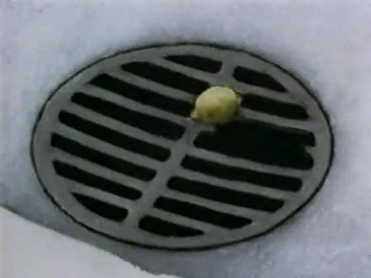The animation itself addresses a common experience to those who have witnessed deaths: the uneasiness, quietude and matter-of-factness of death. The animation itself pays special attention to objects- giving them a life, will and character all their own, even while they remain, for all intents and purposes, just inanimate objects. Lemons roll heedlessly into sewers, toasters crackle with a hidden energy and potato skins seem nearly acrobatic midair. The focus here illustrates the seeming independence of objects, and their continuation after their user/owner has passed on.

The title's relation to the animation is interesting as well. It implies both a 'breaking' of the day, a violent interruption or intrusion, perhaps the shattering of an illusion- but culturally, the idiom "the break of day" implies the start of the day. In the animation, the day "breaks" in both the literal and idiomatic senses- it begins, and is violently interrupted, then begins again.
~*~Katrina~*~
No comments:
Post a Comment